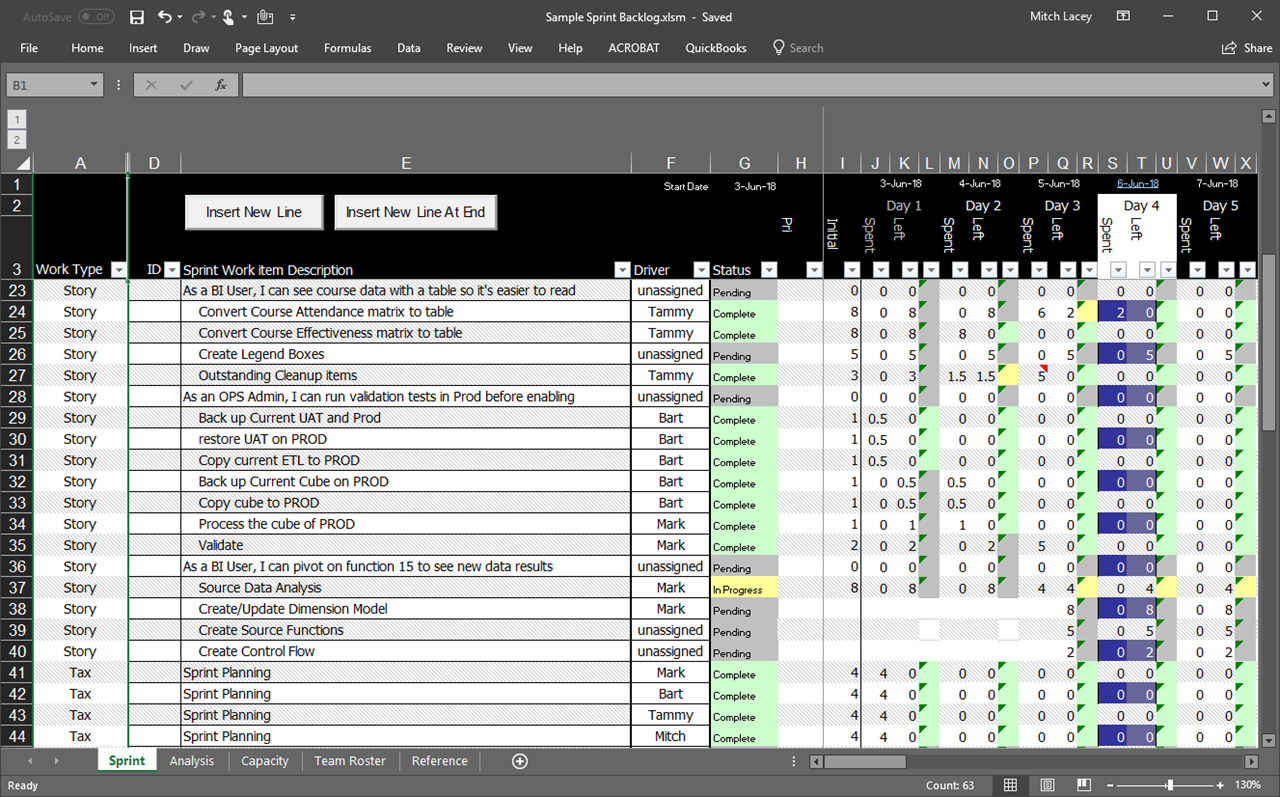The Sprint Backlog in Scrum
The sprint backlog is the output of the sprint planning meeting. A sprint backlog is the list of product backlog items, broken down into tasks, that the development team needs to complete during the sprint in order to turn a selected set of product backlog items into a deliverable increment of functionality. Unlike product backlog items, which commonly use Story Points, sprint backlog tasks have a time-based (hourly) estimate. Since the developers are doing the work, they are responsible for keeping the sprint backlog up to date.
Managing the Sprint Backlog
During a sprint, new tasks may be discovered, and tasks already identified may be adjusted. This is perfectly normal behavior. The development team simply adds the new tasks (and an estimate of the work remaining on that task) to the sprint backlog or adjusts the wording (and if necessary, the estimated work remaining) for tasks in progress. As the development team completes tasks, those tasks should be marked as complete on the sprint backlog and update the sprint burndown, if they are using that tool. The sprint backlog shows the team members what is done and what remains to do. This data is essential for team members to plan during their daily scrum meetings.
Sprint Backlog Changes & Patterns
While changes to the sprint backlog are expected, the Scrum Master should be watching for patterns about the type or amount of work that is added or adjusted. If a pattern emerges, it can teach a team quite a bit about the system as it is built and possibly themselves as a team. The picture below shows a typical sprint backlog. The lines with Work Item IDs are the product backlog items. The indented lines underneath each product backlog items are the tasks associated with completing the feature.
Looking at the sample sprint backlog below, notice that line items 38-40 were not originally part of the sprint backlog; it was identified and added on the third day of the sprint. This is evident because the Initial column doesn’t have a number and because the data elements for the initial estimate and days 1 and 2 are blank. This visual indicator shows the team and the Scrum Master that this item was added late, on day three specifically.
Download a sample sprint backlog xls sheet that you can use in your projects here.
